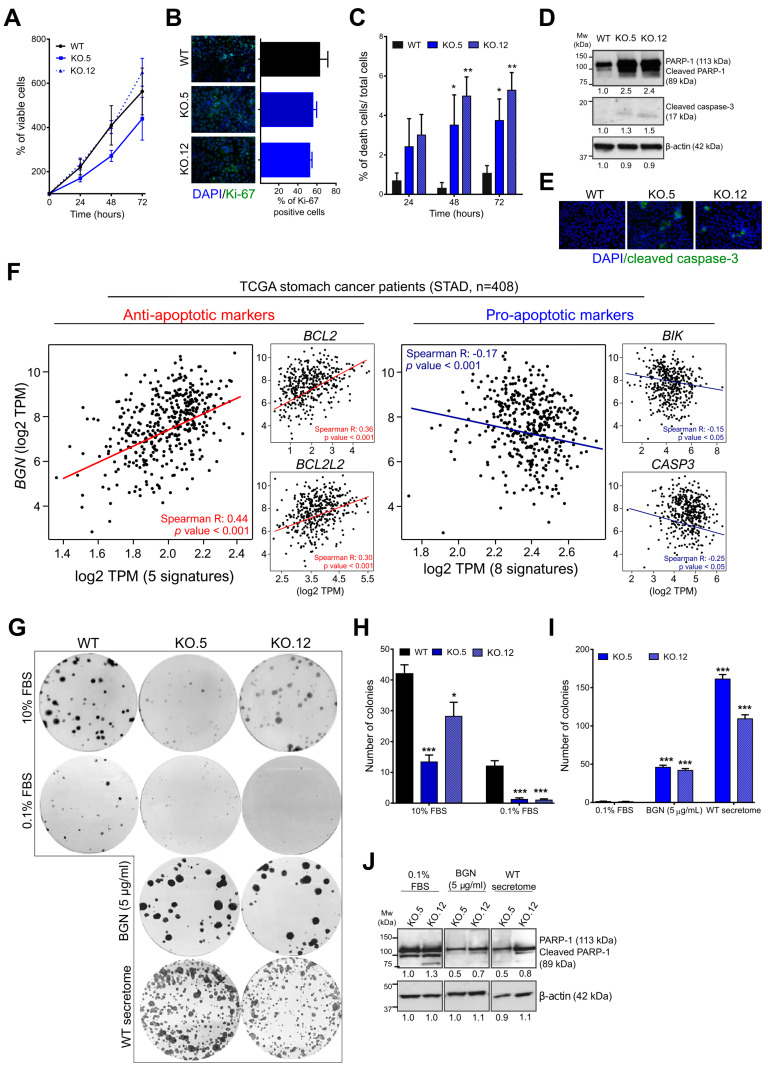Figure 5.
Loss of biglycan promotes GC cell death via induction of pro-apoptotic markers. (A) Trypan blue exclusion assay of viable cells over time. Loss of biglycan expression (clones KO.5 and KO.12) did not affect cell viability when compared to WT cells. (B) Ki-67 immunofluorescence (left panel) and percentage of ki-67 positive cells (right panel) relative of total amount of cells (DAPI stained cells). Images magnification at 200× (C) Percentage of cell death overtime assessed by trypan blue exclusion assay. Biglycan KO cells showed an increase of cell death comparing to WT control. (D) Immunoblot showing an increase of cleaved-PARP1 and caspase 3 in biglycan KO cells (clones KO.5 and KO.12). (E) Immunofluorescence analysis of cleaved-caspase 3 (green) and counterstained with DAPI to visualize the nuclei (blue). Cleaved-caspase 3 was only observed in KO cells. Images magnification at 200× (F) In silico analysis (TCGA, n = 408) demonstrating that GC patients with high levels of BGN expression also present a gene signature that is associated with increased anti-apoptotic markers (BCL2, BCL2L2, BCL2A1, IQSEC2, BCL2L1) and inversely correlation with pro-apoptotic gene signatures (CASP3, CASP6, CASP5, CASP8, CASP10, FASN, BAK, BIK). Gene correlation was performed using the Gene Expression Profiling Interactive Analysis (GEPIA) program. (G) Colony formation assay was used to study the effect of biglycan in the capacity of cells to grow at low densities and under starvation conditions (death stimuli). Exogenous biglycan (commercial purified biglycan or secretome from MKN74 WT cells) is able to restore the capacity of KO cells to form colonies. (H) Colony quantification in the presence or absence of serum. (I) Colony quantification after treatment with purified biglycan or with secretome from MKN74 WT cells. (J) Western blot analysis of cell death (PARP-1 cleavage) with or without treatment with exogenous biglycan. In vitro data are presented as the mean ± standard error of the mean (S.E.M.) of at least three independent experiments. *, p value < 0.05; **, p value < 0.01; ***, and p value < 0.001.

